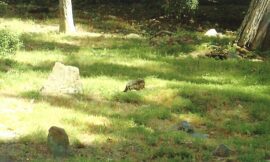For everyone
African American Burial Grounds: Red Hook
The map below (drawn 2012 based on 1849 map courtesy of Historic Red Hook) shows a 1/3rd acre plot with a road to the south and a mill pond to the north. The adjacent landowners are Schultz and Elisha Fingar. I believe due to a change in the road, and an expansion of the mill pond to the south, the former cemetery is under water on Mill Road.
Posted in: African Heritage, For everyone
Black Burial Grounds: Cedar Hill
One of the few African American burial grounds mentioned in Poucher & Reynolds Old Gravestones of Dutchess County in 1924.
Posted in: African Heritage, For everyone
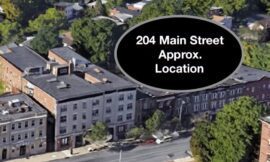
Black Burial Grounds: Poughkeepsie
Given the negligence in keeping records of the burial of persons of color historically, we often rely on other than an ideal primary source such as a cemetery burial record. In this situation we rely on an 1870 Poughkeepsie newspaper account that quotes an older resident as saying, upon discovery of multiple coffins and human remains while digging at the equivalent of what is today 204 Main Street (between Washington & Vassar Street, south side), that this was a “Negro burial ground” created by a slave owner “near the vicinity” between 1800 and 1810. Above: click to enlarge.
Posted in: African Heritage, For everyone
Black Burial Grounds: Beacon
The Walter M. Patrice online library is a living, growing resource. Please encourage further work in studies of the local men, women and children of African descent.
Posted in: African Heritage, For everyone
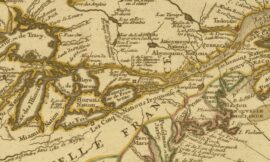
Sophia Pooley: In Her Own Words
Benjamin Drew published the book, The Refugee: or the Narratives of the Fugitive Slaves in Canada in 1856, capturing narratives of freedomseekers in first person testimony. Among the narratives is that of Sophia Pooley, who was born and raised ten miles south of Poughkeepsie in Fishkill. At the age of seven she was sold into slavery in Canada, this would have been around 1769. She is 90 years old when telling her story. We are grateful to Bard College Professor Christian Crouch for directing us to this material. Recommended Reading: Verbatim from the book: Sophia Pooley. I was born in Fishkill, New York State, twelve miles from North River. My father’s name was Oliver Burthen, my mother’s Dinah. I am now more than ninety years old. I was stolen from my parents when I was seven years old and brought to Canada; that was long before the American Revolution. There were hardly any white people in Canada then–nothing here but Indians and wild beasts. Many a deer I have helped catch on the lakes in a canoe: one year we took ninety. I was a woman grown when the first governor of Canada came from England: that was Gov. Simcoe. My parents were slaves in New York State. My master’s sons-in-law, Daniel Outwaters and Simon Knox, came into the garden where my sister and I were playing among the currant bushes, tied their handkerchiefs over our mouths, carried us to a vessel, put us in the hold, and sailed up the river. I know not how far nor how long–it was dark there all the time. Then we came by land. I remember when we came to Genesee,–there were Indian settlements there,–Onondagas, Senecas, and Oneidas. I guess I was the first colored girl brought into Canada. The white men sold us at Niagara to old Indian Brant, the king. I lived with old Brant about twelve or thirteen years as nigh as I can tell. Brant lived part of the time at Mohawk, part at Ancaster, part at Preston, then called Lower Block: the Upper Block was at Snyder’s Mills. While I lived with old Brant we caught the deer. It was at Dundas at the outlet. We would let the hounds loose, and when we heard them bark we would run for the canoe–Peggy, and Mary, and Katy, Brant’s daughters and I. Brant’s sons, Joseph and Jacob, would wait on the shore to kill the deer when we fetched him in. I had a tomahawk, and would hit the deer on the head–then the squaws would take it by the horns and paddle ashore. The boys would bleed and skin the deer and take the meat to the house. Sometimes white people in the neighborhood, John Chisholm and Bill Chisholm, would come and say ‘t was their hounds, and they must have the meat. But we would not give it up. Canada was then filling up with white people. And after Brant went to England, and kissed the queen’s hand, he was made a colonel. Then there began to be laws in Canada. Brant was only half Indian: his mother was a squaw–I saw her when I came to this country. She was an old body; her hair was quite white. Brant was a good looking man–quite portly. He was as big as Jim Douglass who lived here in the bush, and weighed two hundred pounds. He lived in an Indian village–white men came among them and they intermarried. They had an English schoolmaster, an English preacher, and an English blacksmith. When Brant went among the English, he wore the English dress–when he was among the Indians, he wore the Indian dress,–broadcloth leggings, blanket, moccasins, fur cap. He had his ears slit with a long loop at the edge, and in these he hung long silver ornaments. He wore a silver half-moon on his breast with the king’s name on it, and broad silver bracelets on his arms. He never would paint, but his people painted a great deal. Brant was always for making peace among his people; that was the reason of his going about so much. I used to talk Indian better than I could English. I have forgotten some of it–there are none to talk it with now. Brant’s third wife, my mistress, was a barbarous creature. She could talk English, but she would not. She would tell me in Indian to do things, and then hit me with any thing that came to hand, because I did not understand her. I have a scar on my head from a wound she gave me with a hatchet; and this long scar over my eye, is where she cut me with a knife. The skin dropped over my eye; a white woman bound it up. [The scars spoken of were quite perceptible, but the writer saw many worse looking cicatrices of wounds not inflicted by Indian savages, but by civilized (?) men.] Brant was very angry, when he came home, at what she had done, and punished her as if she had been a child. Said he, “you know I adopted her as one of the family, and now you are trying to put all the work on her.” I liked the Indians pretty well in their place; some of them were very savage,–some friendly. I have seen them have the war-dance–in a ring with only a cloth about them, and painted up. They did not look ridiculous–they looked savage,–enough to frighten anybody. One would take a bowl and rub the edge with a knotted stick: then they would raise their tomahawks and whoop. Brant had two colored men for slaves: one of them was the father of John Patten, who lives over yonder, the other called himself Simon Ganseville. There was but one other Indian that I knew, who owned a slave. I had no care to get my freedom. At twelve years old, I was sold by Brant to an Englishman in Ancaster, for one hundred
Posted in: African Heritage, For everyone
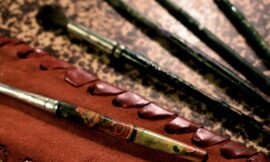
Her Work (3)
From the 1860s to the 1880s, Clowes’s career blossomed. Working from her backyard studio at Heartsease and her orange grove in Florida, she captured the bucolic spirit of rural America. Driven and dedicated to her craft, she wrote to her sister that she would not marry–she was “wedded to her easel.” By 1865, Clowes began exhibiting at the National Academy of Design in New York City. A few years later, she offered work for sale at Archibald Wilson’s store on Main Street in Poughkeepsie, which helped bring her paintings to the attention of the local elite. Over the next twenty years, Clowes painted dozens of scenes depicting local prize cattle, horses, and sheep, as well as other wholesome scenes of farm life. With her spirited and sweet scenes, Clowes emerged onto the art world’s international stage in 1876 at the Centennial Exposition in Philadelphia. Her painting Cattle at the Brook, now lost, was displayed in Memorial Hall alongside the works of Winslow Homer, Albert Bierstadt, and Sanford Gifford—all hung salon style to represent the nation’s finest art. Below: Click on any image to enlarge. Then click full view icon at top right of image for best viewing: Sheep Horses Cows Small & Miniature
Posted in: For everyone
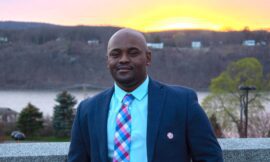
PQ&A: Dwayne Douglas
Traducción por Mildred Gopar. Foto por Phyenix Young-White. Dwayne Douglas Q: ¿Así que, usted nació y creció en Poughkeepsie? A: Nací en St. Thomas, Jamaica, de hecho, en los Indies del Oeste. En agosto de 1990, me mudé a Poughkeepsie. Tenía 8 años; yo diría que fui criado aquí en Poughkeepsie. Q: ¿Cuándo se mudo aquí, fue con su madre y su padre? Y ¿Aún siguen juntos? A: Si, pues mi madre aún vive en Poughkeepsie. Mi padre me trajo directamente de Jamaica. El vive en Queens ahora. Me visita básicamente cada cuantos meses y pasa tiempo conmigo y con mi familia y todo eso. Q: ¿Tiene hermanos o hermanas? A: Si, soy el mayor de nueve. Mi hermana, quien es doctora, vive en el Town de Poughkeepsie, cerca del Galleria Mall. Algunos otros se fueron a la universidad por otros lados y se terminaron quedando por allá. Tengo un hermano que asistió a la Universidad de Sacred Heart en Connecticut, y ahora trabaja ahí. Q: ¿Están algunos de ellos en Poughkeepsie? A: Una de mis hermanas menores está aquí. El menor de mis hermanos también vivía aquí, pero desafortunadamente fue asesinado como un año y medio atrás, cuando tenía 21 años. Fue una locura, el 2019 fue un año muy difícil para nuestra familia. Q: Siendo el mayor, ¿Ha tenido mucha responsabilidad por sus hermanos durante estos años? A: De hecho, siento que mis hermanos son la razón por la que estoy en Poughkeepsie. Recibí una beca para atender a dos diferentes universidades para negros en el sur. Era un musico/ baterista hábil, saliendo de la escuela preparatoria y tuve una oportunidad para ir al sur y atender diferentes universidades historicas para negros y tocar en sus lineas de batteristas. De verdad quería ir. Pero en el tiempo que me estaba graduando de la preparatoria, mis hermanos seguían en la primaria y secundaria, y sentí que necesitaba estar aquí. Así que si, mi familia es la razón por la cual decidí quedarme y atender la universidad de Marist. Hay una razon del porqué sigo aquí. Me alegro por haber decidido hacer eso, fue la decisión correcta. Q: ¿Aún toca la batería? A: Si. Toqué en una bandade jazz en la preparatoria, y en la banda de jazz y de pep en la Universidad. Formé mi propia banda de funk mientras estaba en Marist, la cual en verdad fue muy buena. Tocabamos por todos lados, desde el 2001 hasta el 2006 cuando me gradué. Me mantengo en contacto con los tipos de la banda. Aún estoy conectado con el departamento de música en Marist. Empecé tocando en mi Iglesia local, Smith Metropolitan AME Zion, aquí en Poughkeepsie. Q: Así que su iglesia está en el lado norte. ¿También vivió en esa parte de Poughkeepsie? A: Si, primero en la calle Lent. Despues nos mudamos a barrios locales alrededor de la ciudad. En la calle Charles, y después en “Los Ladrillos” en la avenida Hudson. En mis años de preparatoria en Tubman. Cuando me gradué y fui a Marist vivía en el campus escolar. Logré conseguir mi propio apartamento en mi último año. Q: Por cierto, ¿Cómo se llamaba la banda que formó en Marist? A: Funk 101. ¡Era padre! Nos diversificamos del campus escolar a lugares por todo Poughkeepsie. Cuando nos volvíamos más populares, hacíamos trabajos especiales, a veces con artistas locales, cuando necesitaban una banda en vivo para apoyarles en un show. Viajamos on ellos, desde la ciudad de Nueva York hasta Connecticut. Fue una buena epoca. Tocamos en shows de premios en la preparatoria de Poughkeepsie, los Premios de Prestigio. Fueron organizados por Derek Wilson. Él creció en Poughkeepsie y era el manager de la gira para Whitney Houston y Usher. Cuando regresaba a casa, él hacía estas ceremonias de premios, y honraba a personas locales que estaban haciendo grandes cosas en la comunidad. También tenía estrellas venir como oradores invitados, hasta para ser honrados. Era muy genial. Lo hizo como por tres años. Entonces después de la muerte de Whitney estaba emocionalmente abrumado y paro. Me fuí honrado, y por dos años mi banda era la banda de casa, lo cual era muy bueno. Q: Por ejemplo, ¿A quienes traía Derek? A: ¿Conoces a la artista de R & B Aaliyah, la que murió en el accidente de avión? Sus padres fueron honrados en los Premios de Prestigio. Deborah Cox, era una cantante grande de R & B en los 90s, ella estuvo ahí. Uno de los tipos de Boyz II Men vino alguna vez. Derek realmente tenía conexiones. Q: Cuénteme acerca de su crianza y vida familiar aquí en Poughkeepsie. A: Mi base como un joven en Poughkeepsie era el haber crecido en la iglesia. aprendiendo lecciones positivas, siendo guiado en la dirección correcta. Yendo a la escuela dominical y a la iglesia los domingos, estudiando de la Biblia, involucrado en actividades positivas, no dejándome ser llevado por ningunas actividades negativas de la calle. Fui alentado a hacer lo correcto y tenía mentores dentro de la iglesia, dentro de la comunidad. Personas que me enseñaron y explicaron la manera correcta de actuar. Para mi, estas personas eran como héroes, y eran grandes ejemplos. Vivían en Poughkeepsie, eran dueños de casas. No tienian títulos universitarios, estaban en sus trabajos por 15, 20, 25 años. Algunos iban a la iglesia desvelados, exhaustos pero llegaban. Algunos estaban trabajando dobles y triples, personas trabajadoras. Siempre me decían que el dinero lento es dinero seguro. Que nunca me dejara llevar por las calles, con toda su locura y el dinero rápido, y todas esas cosas. Fue bien interesante crecer en las zonas marginales, especialmente siendo pobre, ya que nunca me di cuenta de que era pobre. Esa es la historia de muchos de los jóvenes que crecen en estas situaciones. Yo lo tenía todo. Tenía comida. Tenía ropa que tal vez no era la major pero la tenía. Tenía un techo sobre mi cabeza. Fui amado y apoyado por mi
Posted in: For everyone, Poughkeepsie
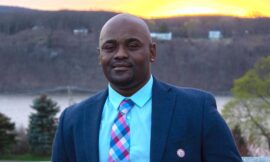
PQ&A: Dwayne Douglas
Photo by Phyenix Young-White. Dwayne Douglas Q: So were you born and raised entirely in Poughkeepsie? A: I was born in St. Thomas, Jamaica, actually, in the West Indies. In August 1990 I moved to Poughkeepsie. I was 8 years old. I would say I was raised here in Poughkeepsie. Q: When you moved here, was it with both your mother and your father? And are they still around? A: Yeah, well my mom still lives here in Poughkeepsie. My dad brought me here directly from Jamaica. He lives in Queens now. He comes up pretty much every few months and hangs out with me and my family and everything like that. Q: Do you have siblings? A: Yeah, actually I’m the oldest of nine. My sister who’s a doctor, she lives in the Town of Poughkeepsie, near the Galleria Mall. Some others went off to college in other places and ended up staying near there. I have a brother who went to Sacred Heart University in Connecticut, and now he works there. Q: Are any in Poughkeepsie? A: One of my youngest sisters is here. My youngest brother also lived here, but unfortunately he was murdered here about a year and a half ago, when he was 21. It was crazy, 2019 was a rough year for our family. Q: As the oldest, have you had a lot of responsibility for your siblings over the years? A: Actually, I feel like my siblings are the reason I’m in Poughkeepsie. I received a scholarship to go to two different black colleges in the south. I was an accomplished musician/drummer coming out of high school and I had an opportunity to go down south and go to different historically black colleges to play in their drum lines. I really wanted to go badly. But at the time when I was graduating high school, my siblings were still in elementary school and middle school, and I just felt like I needed to be here. So yeah, family is the reason why I decided to stay local and attended Marist College. There’s a foundation of why I’m still here. I’m glad I decided to do that, it was the right thing. Q: Do you still play the drums? A: Yes. I played in the jazz band In high school, and in the jazz band and the pep band in college. I formed my own funk band while I was at Marist, which was actually really good. We played all over, from 2001 to 2006 when I graduated. I still stay in contact with all the guys from the band. I’m still connected to the music department at Marist. I started out playing at my local church, Smith Metropolitan AME Zion here in Poughkeepsie. Q: So your church is on the northside, did you live in that part of Poughkeepsie as well? Yeah, on Lent Street at first. Then we moved to the local projects around the city. At Charles Street, and then at “The Bricks” on Hudson Avenue. In my high school years at Tubman. When I graduated and went to Marist I lived on campus. I was able to get my own apartment by senior year. Q: By the way, what was the name of the band you started at Marist? A: Funk 101. Yeah it was cool. We branched out from campus to places all over Poughkeepsie. As we became more popular, we would do special gigs, sometimes with local artists, when they would need a live band to back them up for a show. We would travel with them, from New York City to like Connecticut. It was a good time. We performed at awards shows at Poughkeepsie High School, the Prestige Awards. They were organized by Derek Wilson. He grew up in Poughkeepsie and he was the road manager for Whitney Houston and Usher. And when he came home he would do these awards shows, and honor local people who were doing big things in the community. He would also have stars come to these shows to be a guest speaker, and even to be honored. It was a really cool thing. He did it for like three years. Then I think after Whitney died he was just kind of emotionally overwhelmed and stopped. I was actually an honoree, and for two years my band was the house band, which was really cool. Q: So for example, who would Derek bring? A: Do you know the R&B artist Aaliyah, the one who died in the plane crash? Her parents were honored at the Prestige Awards. Deborah Cox, she was like a really big time R&B singer in the 90s, she was here. One of the Boyz II Men guys came one time. Derek really had some connections. Q: Tell me about your upbringing and family life growing up here. A: My foundation as a young man in Poughkeepsie was growing up in the church. Being taught positive lessons, trying to be led in the right direction. Going to Sunday school and church on Sundays, Bible study, being involved in positive activities, not getting caught up in any negative street activities. I was encouraged to do the right things and I had mentors within my church, within the community. Men who would show and explain to me the right way. For me, those guys were like heroes, and were great examples. They lived in Poughkeepsie, they owned homes. If they didn’t have college degrees they were at their jobs for 15, 20, 25 years. Some would come to church from an overnight, exhausted but still showed up. Some were working doubles and triples, hard working men. They would always tell me that slow money is safe money. Never get caught up in the streets, with all of the nonsense and the fast money, and all that kind of stuff. It’s interesting. Growing up in the inner city, growing up essentially poor, I did not realize I was poor. And
Posted in: For everyone, Poughkeepsie
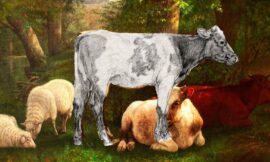
Clowes: the Role of Sketches in the Development of Paintings
We are very grateful to Rob Gosselink for lending his beautiful 1868 painting by Caroline Clowes to the exhibition, Fertile Ground: the Hudson Valley Animal Paintings of Caroline Clowes. We have been able to locate three preparatory sketches Clowes developed (dated and signed in the summer of 1868) in advance of the painting (also dated 1868). This gives us great insight into how she assembled a narrative, where she was true to nature, and where she took some liberties! Use either the left and right arrows within the image, or the thumbnail images at the bottom to navigate forward and backward. To override the autoplay, simply hover over any image or use arrows left and right.
Posted in: For everyone

